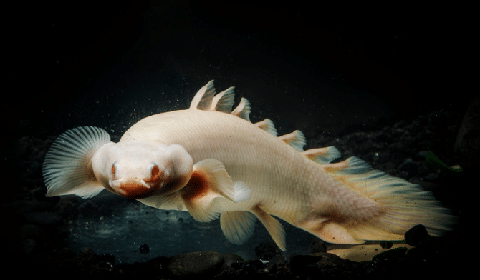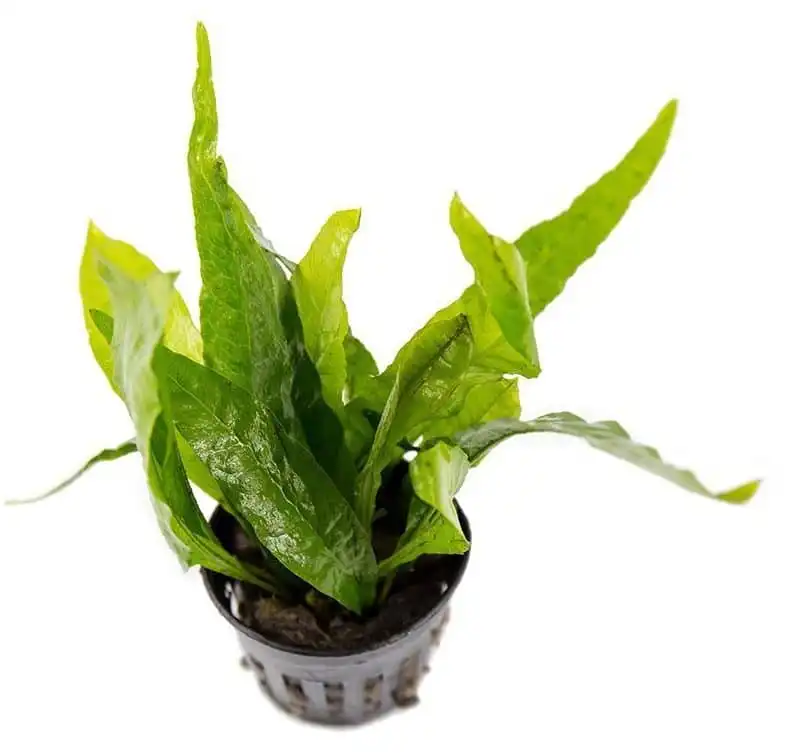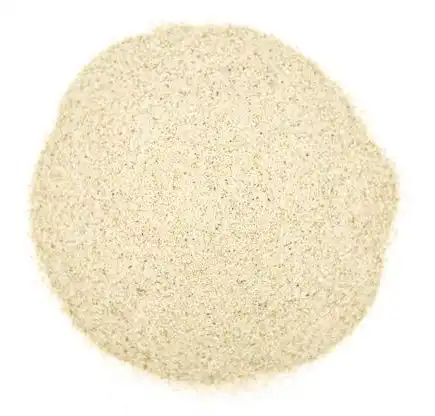Thank you for visiting! By the way… any links on this page that lead to products on Amazon and other stores/partners are affiliate links Aquarium Store Depot earns a commission if you make a purchase.
The name, Dinosaur bichir, might scare you at first, but hold up—they are just ray-finned fish from Africa known for their unique appearance. Dinosaur bichirs, as the name suggests, have elongated bodies with armored scales, giving them a reptile like look.
The biggest and the most distinctive trait of Dinosaur bichirs is their ability to breathe air when needed. This way, these fish species can even survive in low Oxygen levels, making them very hardy to keep in aquarium hobby.
There’s much more to Dinosaur bichirs than their name and appearance that we’ll find out in this article.
Keep reading!
Key Takeaways
- It is well known that bichir fish can breathe air, which enables them to live in situations with low oxygen levels and forage for food on the water’s surface.
- Some of these fish may grow to be extremely enormous, measuring up to three feet in length (91 cm). It’s critical to give them a roomy tank that can fit their expanding growth. For a fully grown dinosaur bichir, a tank that is at least 90 gallons (284 litres) in size is advised.
- These fish may be housed with a variety of tankmates that get along with them and are typically quiet. To prevent any hostility or bullying, it’s critical to pair together fish in the same tank that are comparable in size and temperament.
What is a Dinosaur Bichir?
The Senegal bichir, also known as the Reed fish, Cuvier’s bichir, grey bichir, Swamp dragon, Dragon fish, and Dinosaur eel, are all the common names of dinosaur bichir (Polypterus Senegalus). The fact that Dinosaur Bichirs are fish and not eels, the name, Dinosaur eel, might be rather confusing.
Dinosaur bichirs are freshwater fish that belongs to the family Polypteridae with ray finned fins. They are found in Africa and, sometimes, in a range of aquatic environments, including lakes, swamps, rivers, and streams.
There are over a dozen distinct species of swamp dragons, sometimes called dinosaur bichirs. The Grey Bichir or Senegalus Bichir species, however, is the most popular among fish keepers. Dark grey horizontal stripes that gradually wane as the fish matures are typically present all over the dinosaur Bichir.
Origin and Habitat
They are freshwater fish and are native to African regions such as Chad, Cameroon, Ghana, Senegal, and Sudan as well as other African nations extending from the Nile River basin into West Africa.
Appearance
Dinosaur bichir have elongated, eel-like bodies that are covered in a row of bony, fin-like appendages called pterygiophores. These leg like limbs support the fish while they are lying on the bottom and aid in movement through the water. They often have a row of spines running along their backs and are a light green or brown tint.

They have a mouth full of tiny, pointed teeth and enormous, prominent eyes. They are well recognised for being able to breathe air, which enables them to survive in situations with low oxygen levels.
Overall, dinosaur bichir are enchanting freshwater fish that are well-liked by aquarium hobbyists. They are a fantastic option for beginner aquarists because of their hardiness and versatility.
How Big Do Senegal Bichir Get?
Some Bichir species can reach lengths of up to 3 feet. However, other fish species, like the Senegalese Bichir, only reach a height of about one foot.
Dinosaur bichirs have the potential to grow fairly enormous, with some reaching lengths of up to three feet (91 cm). However, these fish often have substantially smaller average sizes, with most individuals being between 12 and 24 inches long (30-60 cm). Diet, environment, and heredity are just a few examples of the variables that might affect the typical dinosaur bichir size.
It’s crucial to keep in mind that these fish, especially when they’re young, may develop pretty fast. Therefore, it’s important to give them a roomy tank that can fit their expanding growth. For a fully developed dinosaur bichir, a tank capacity of at least 90 gallons is advised. In order to encourage their growth and development, it’s crucial to provide them a high-quality food that is abundant in protein and other minerals.
Dinosaur Bichir Lifespan
A dinosaur bichir’s lifetime can change based on things including nutrition, environment, and genetics. These fish are known to live relatively longer in general, with some living for over 20 years. However, they frequently survive for 10 to 15 years in captivity, especially if they get good care.
It’s crucial to provide your dinosaur bichir with a roomy tank that is adequately filtered and oxygenated if you want to help guarantee that they live a long and healthy life. To promote their growth and development, these fish also require a high-quality food that is rich in protein and other minerals. Your fish can stay healthy and happy by receiving regular water changes and tank upkeep.
Care Guide
Dinosaur bichir are hardy fish species that are well-liked by people who enjoy keeping fish. They are indigenous to Africa and may be found in a range of aquatic environments, such as lakes, rivers, and streams. These fish are well known for being able to breathe air, which enables them to live in situations with low oxygen levels.

Tank Setup
If you’re interested in keeping dinosaur bichir as pets, here is a general care guide to help you get started:
Tank size
Dinosaur bichir can get pretty big with some species reaching around 3 feet in length. Therefore, aim for providing them with a spacious tank size that can accommodate their size, keeping them happy and healthy.
The ideal tank size of dinosaur bichirs should be no less than 90 gallons.
Water Parameters
Dinosaur Bichirs fish can tolerate a broad range of water conditions. However, they prefer a pH of 6.5 to 7.5 and a water temperature of 75 to 82 degrees Fahrenheit (24 to 28 degrees Celsius). I recommend doing regular water changes and installing a reliable filtration system to maintain the water quality so your bichirs remain happy and healthy.
Handling
Dinosaur Bichirs are sensitive to stress and can be hurt by hard handling, thus touching them is typically not advised. It is recommended to watch over and take care of these fish without going inside the tank.
Tank Maintenance
Your dinosaur bichir’s health and wellbeing depend on proper tank upkeep. Here are some general pointers for keeping the fish in these tanks in a healthy habitat. For your tank’s water quality to remain high, routine water changes are essential.
A gravel vacuum should be used to remove any substrate debris before doing a water change of roughly 25% once a week. Before adding tap water to the tank, make sure to run it through a water conditioner to get rid of chlorine and other impurities.
The Python is a mainstay in the fish hobby. Easily clean your aquarium by connecting this to your sink!
Filtration and Aeration
The water quality in your tank must be maintained using a high-grade filtering system. It’s crucial to pick a filter that fits your tank’s size and the quantity of fish you keep. You make sure your filter is operating correctly, and be sure to clean and maintain it frequently.
A healthy tank habitat for dinosaur bichir includes filtration and aeration. Native to Africa, these fish may be found in lakes, rivers, streams, and other types of aquatic settings. They are well recognized for being able to breathe air, which enables them to survive in situations with low oxygen levels.
Here are some general guidelines for filtration and aeration in a tank for dinosaur bichirs:
- Filtration: To keep the water in your tank in good condition, a top-notch filtration system is necessary. It’s crucial to pick a filter that fits your tank’s size and the quantity of fish you keep. For dinosaur bichir, a filter that can process at least 4-6 times the capacity of your tank per hour is advised.
- Aeration: Maintaining your tank’s oxygen levels and enhancing your fish’s general health require enough aeration. To add oxygen to the water, it makes sense to utilize an air pump and air stones. To assist in circulating and oxygenating the water, you may also utilize a powerhead or a canister filter.
- Filter Filter types: Canister filters, hang-on-back filters, and sponge filters are a few of the filter types that may be used in a tank for dinosaur bichir. Larger tanks benefit from canister filters because they offer a high flow rate and a lot of filter media capacity. Smaller tanks benefit from hang-on-back filters since they are simple to install and maintain. For dinosaur bichir, sponge filters may not be enough as these fish are hard on bioloads.
Aquatic Plants and Decorations
For a tank containing the dinosaur bichir, aquatic plants and ornaments might be a wonderful addition. Native to Africa, these fish may be found in lakes, rivers, streams, and other types of aquatic settings. They are normally calm and don’t need much room to swim, although they do like certain structures and hiding spots in their tank. The best aquatic plants for Dinosaur bichirs are Java Fern, Java Moss, Anubias, and other lowlight plants.
Java Fern is one of the easiest and hardiest live plants you can purchase
Tank Decorations
Your dinosaur bichir can have structures and hiding places to explore such as caverns, PVC pipes, and artificial vegetation.
Author's Note: It's crucial to pick decorations that are secure for your fish and free of any potentially harmful sharp edges or rough surfaces.
Substrate
The substrate, or the substance that makes up the tank’s bottom, can also play a significant role in the decoration of your tank. Fine gravel, sand, or a mix of the two are suitable substrate choices for dinosaur bichir. It’s important to choose a substrate that is secure for your fish and simple to care for.
Natural sand is excellent for bottom feeder fish to forage around in.
Diet
Since Dinosaur Bichirs are carnivorous fish, they consume a wide range of meals, including live, frozen, and freeze-dried worms, crustaceans, and insects. To promote their growth and development, it’s essential to provide them a varied diet that is high in protein and other nutrients.
Made in the USA with raw quality ingredients. This food is specially designed for Axolotls!
Frequency of meals
Depending on their size and age, you should only feed your fish once or twice a day. Also, it’s not recommended to overfeed your Bichirs to maintain tank hygiene and maintain pristine water conditions. Feed them as much as they can eat in a few minutes.
Variety
Your dinosaur bichir’s general health and well-being depend on having a diversified diet. You may provide them with high-quality commercial pellet or flake food that is made for omnivorous fish in addition to live and frozen items.
Supplements
I also advise including fresh vegetables like spinach, lettuce, and peas in the diet of your dinosaur bichir. However, these vegetables may be difficult to digest for your Bichirs. To cater to this, I recommend blanching these veggies beforehand.
Feeding habits
Dinosaur bichir are carnivorous predators and opportunistic eaters that will consume a wide range of foods. They may forage for food on the water’s surface because of their well-known capacity to breathe air. It’s crucial to provide them with a balanced diet composed of both aquatic and terrestrial items.
Community Tank Mates
Although they can occasionally be moderately aggressive fish, dinosaur bichirs are often calm fish that get along well with various tank mates. They are a fantastic choice for a community tank because of their hardiness and versatility.
Compatibility
Regarding size, attitude, and environmental needs, it’s critical to select tankmates that are suitable for dinosaur bichir. These fish ought to be housed alongside other tranquil species that won’t bother or nibble at them.
Size
Dinosaur bichir may grow up to three feet in length, making them huge fish (91 cm). To prevent any hostility or bullying, it’s crucial to select tankmates that are of like size.
Water conditions
Choose tankmates who can tolerate the same water conditions as dinosaur bichir if you want them to survive. Bichirs prefer tropical temperatures of 75–82°F (24–28°C) and a pH range of 6.5–7.5.
Some good community tank mates for dinosaur bichir include:
- Plecostomus
- Oscar fish
- Large Gouramis
- Angelfish
- Congo Tetras (risky, but documented cases of them working)
- Mystery Snails
Are Dinosaur Bichir Aggressive?
The majority of dinosaur bichir are rather aggressive fish. They are famous for their resilience, flexibility, and general calmness around other fish. It’s crucial to remember that every fish has a unique personality and may display various behaviors based on their surroundings and tank mates. Dinosaur eels occasionally exhibit aggressive behavior toward smaller or slower-moving fish, especially if they feel threatened or are hungry.
Choose tankmates that are suitable with dinosaur bichir in terms of size, temperament, and environmental needs to help reduce aggressiveness in your tank.
Additionally, it’s imperative to provide your fish a roomy, clean tank with lots of structures and hiding spots for them to explore. You may lessen hostility and foster harmony in the population of fish in your aquarium by giving your fish a healthy, stress-free environment.
Can You Keep A Single Dinosaur Bichir fish?
Dinosaur bichirs can be content and healthy without tank mates. However, some individuals might find it more intriguing and delightful to observe a community of fish interacting and exploring their surroundings as a whole rather than keeping their dinosaur bichir alone.
Choose tankmates that are compatible with your dinosaur bichir in terms of size, temperament, and environmental needs if you prefer to keep them together with other fish. Additionally, it’s crucial to provide your fish a roomy, clean tank with lots of structures and hiding spots for them to explore.
The choice of whether to keep your dinosaur bichir with tank mates or alone is ultimately subjective and will rely on your choices and the particular requirements of your fish.
How Many Dinosaur Bichirs Should You Have?
Numerous variables, including as the tank’s size, the fish’s size, and the tank’s general stocking density, affect the number of dinosaur bichir.
Aim for a stocking density of around 1-2 inches (2.5-5 cm) of fish per gallon (3.8 litres) of water as a general rule. This will help avoid overpopulation and stress by giving each fish ample room to swim and explore.
Poor Tank Mates
Dinosaur bichir shouldn’t be kept with certain fish, such as:
Fish that are territorial or aggressive
Since dinosaur bichir are often placid, fish that are likely to nip at them or bother them may not get along well with them. Cichlids, several catfish species, and some tetra species are a few examples of aggressive fish that would not make good tankmates for dinosaur bichir.
Fish that are smaller or move more slowly
Because dinosaur bichir are predatory fish, they may feed on these fish, especially if they are not receiving enough food. To prevent any hostility or bullying, it’s critical to pair together fish in the same tank that are comparable in size and temperament.
Fish with different habitat requirements
It’s crucial to find tank mates who can tolerate the same water conditions as dinosaur bichirs in their native home since various fish have varied habitat needs. These fish like temperatures of 75–82°F (24–28°C) and a pH range of 6.5–7.5. Fish that demand very high or very low pH levels or temperatures, for example, may not be acceptable.
Breeding
Breeding senegal bichir, sometimes known as dinosaur bichir, is a rather simple operation that doesn’t need for any specialised setup or equipment. The breeding process of Dinosaur bichirs is as follows:
Aquarium setup
It’s crucial to provide your breeding fish a roomy, clean tank with lots of structures and hiding spots for them to explore. For a fully developed dinosaur bichir, a tank that is at least 90 gallons (284 litres) in size is advised.
Water conditions
These fish like waters with a pH of 6.5 to 7.5 and a temperature of 75 to 82°F (24 to 28°C). By making routine water changes and utilising a top-notch filtration system, good water quality may be maintained.
Diet
Your breeding fish should have a varied diet that is high in protein and other elements for general health and well being. You may provide them with high-quality commercial pellet or flake food that is made for omnivorous fish in addition to live and frozen items.
Breeding behavior
Bichir dinosaurs are mostly calm creatures that don’t engage in any particular courtship or mating behavior. On a level surface, the female will lay her eggs, and the male will fertilize them. Your breeding fish should have a lot of hiding spots and structures to make them feel safe and promote breeding behavior.
Incubation and hatching
Depending on the water’s temperature, the eggs will hatch 7 to 10 days after fertilization. Maintaining adequate water quality and giving the fry appropriate food as they develop is crucial.
Common Health Problems
Dinosaur bichir, like any pets, are susceptible to various health issues if they are not given the necessary care. Native to Africa, these fish may be found in lakes, rivers, streams, and other types of aquatic settings. Although they are renowned for their resilience and flexibility, poor tank conditions can still cause them to have health issues.
Here are some common health problems that dinosaur bichir may experience:
Ich
Ich is one of the most common fish diseases that is brought on by a parasite that can spread through contact with contaminated fish or through the water.
Symptoms
- White patches on the skin and gills
- Lethargy
- A loss of appetite
Several treatments can be used to treat ich, but the best way to stop outbreaks is to maintain acceptable water quality and practice basic hygiene.
Fin rot
Fin rot is caused by a bacterial infection. It frequently results from bad water, crowded conditions, or physical harm to the fins.
Symptoms
- Fin rot signs include ragged or frayed fins
- Redness or inflammation
- An appetite reduction.
Antibiotics can be used to cure fin rot, but to stop it from happening again, the root problem must be addressed.
Swim bladder disorder
A disease known as swim bladder dysfunction affects the swim bladder, an organ filled with gas that keeps fish buoyant. It can be brought on by a number of things, including bad water quality and overfeeding.
FAQS
How big do dinosaur bichirs get?
Some species of these fish may grow fairly large, up to a length of around 11.8 to 23.6 inches.
Are bichirs aggressive?
Although bichirs are normally not violent, they can become so during mating. As long as they are not too little and are not aggressive themselves, they are generally calm fish that may be housed alongside other kinds of fish.
Before introducing any species of bichir to your aquarium, it is usually a good idea to do some research on the particular species you are interested in keeping and to speak with an experienced fishkeeper or a veterinarian. Since every animal has its own personality, it’s critical to provide your bichir with lots of room and a suitable habitat so they may grow.
Do They Have Teeth?
Yes, Dinosaur Bichirs have a set of horny, tooth-like structures in their neck and upper digestive system called pharyngeal teeth that they utilise to break open their prey’s shells. Despite not being actual teeth, these structures have a comparable function.
Can They Live Out Of Water?
They cannot survive without water. Bichirs, like other fish, need on an ongoing flow of oxygen-rich water to sustain their breathing and other bodily processes.
What Do You Feed A Dinosaur Eel?
Since they are carnivores, bichirs rarely eat dry foods. A diet of frozen or live foods, such as shrimp, baitfish, mussels, and earthworms, is suggested for larger fish. Smaller animals also consume bloodworms, mosquito larvae, and vitamin-enriched brine shrimp.
Final Thoughts
Dinosaur bichirs are popular freshwater fish that resemble eels; that’s why there are also called as dinosaur eels. They are hardy and easy to care for, but under certain circumstances, they may develop underlying health issues that need special attention and care. Hence, maintain water quality and provide them with ideal tank size and tank mate to ensure their healthy lifestyle.
- About the Author
- Latest Posts
I’m thrilled that you found Aquarium Store Depot! Here you’ll find information on fish, aquariums, and all things aquatics related. I’m a hobbyist (being doing this since I was 11) and here to help other hobbyists thrive with their aquariums! I adhere to a high quality Editorial Process and Review products with real life field usage and practical analysis.










What can I used to cure the ick out of my fish?
Ich-X in a quarantine tank